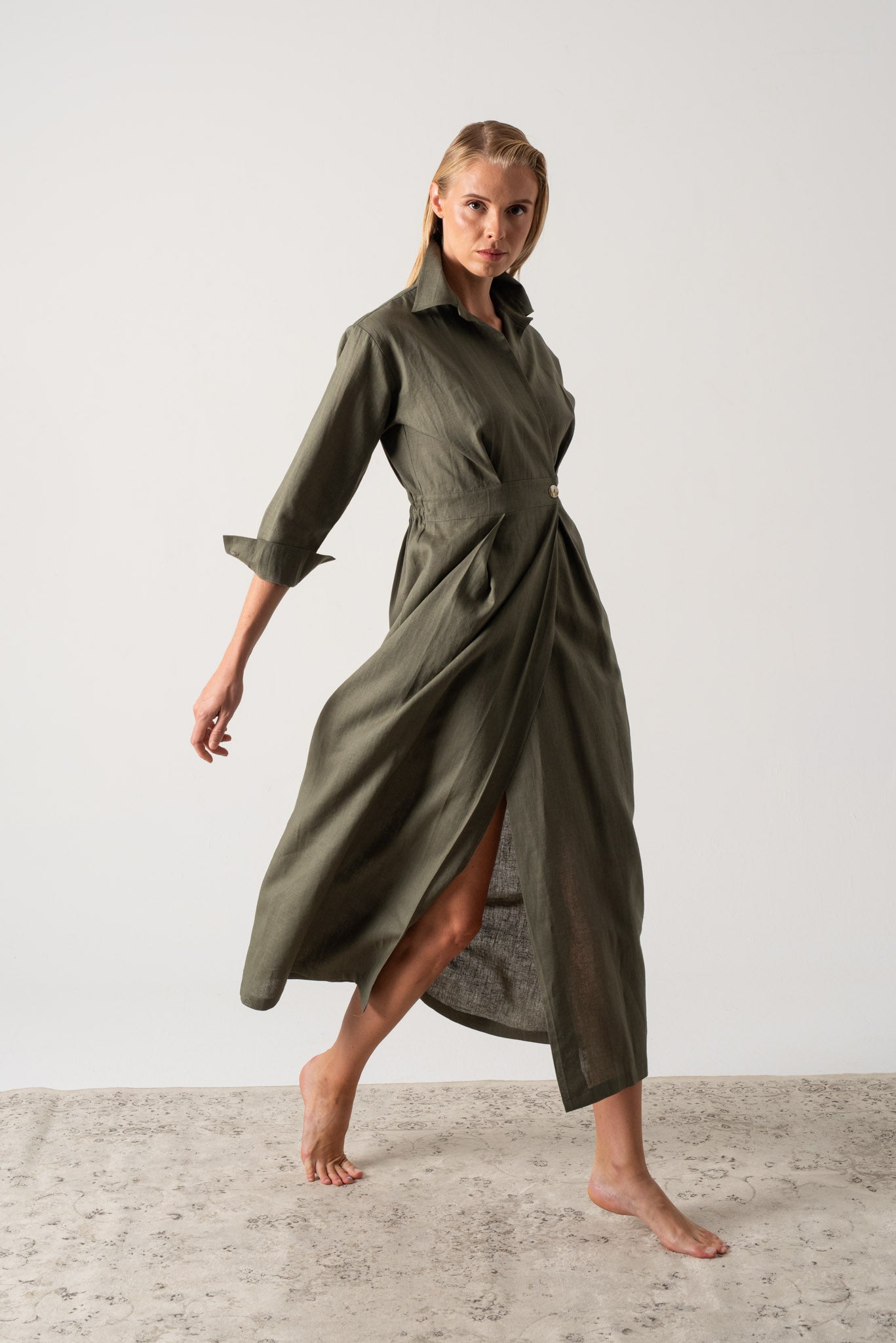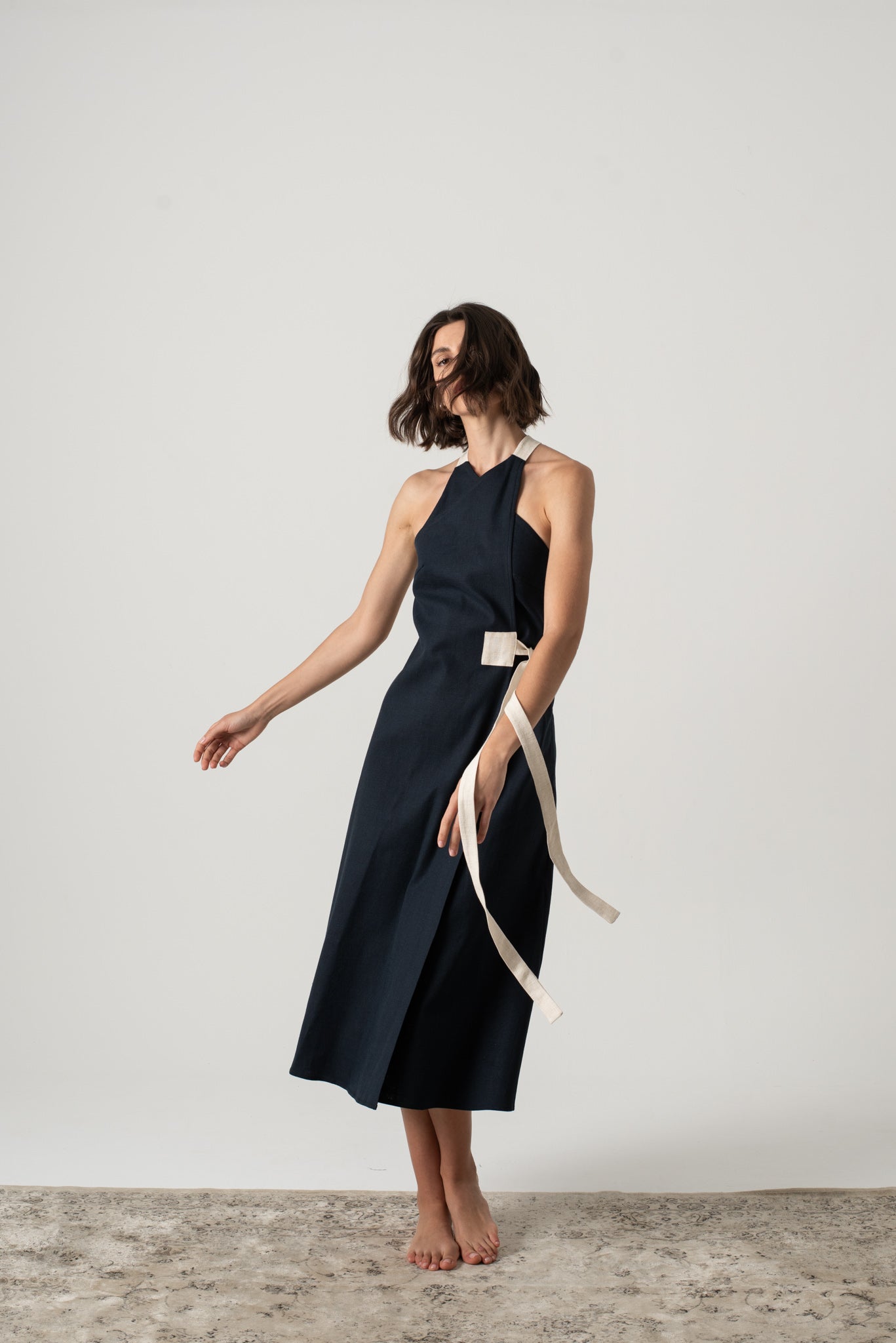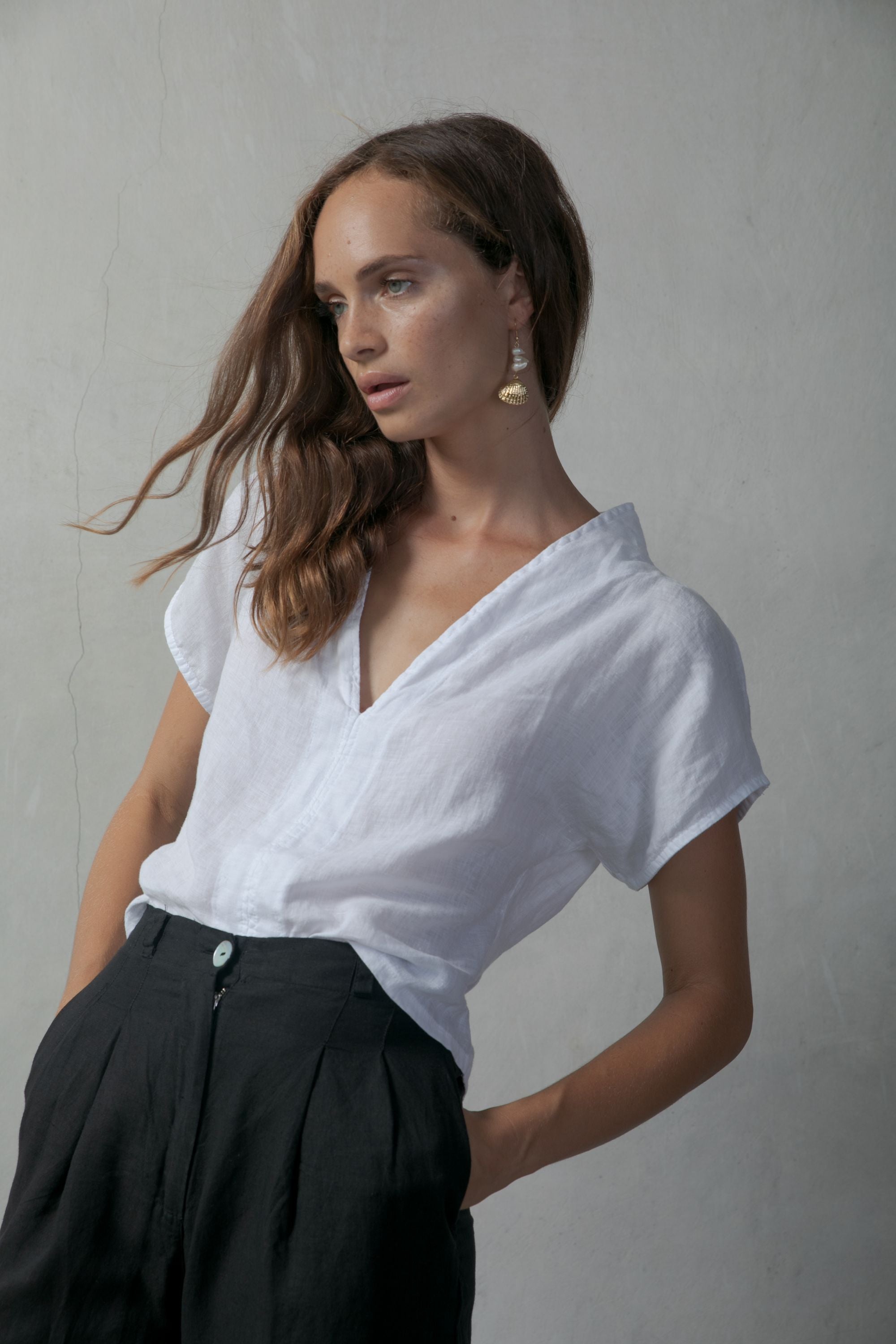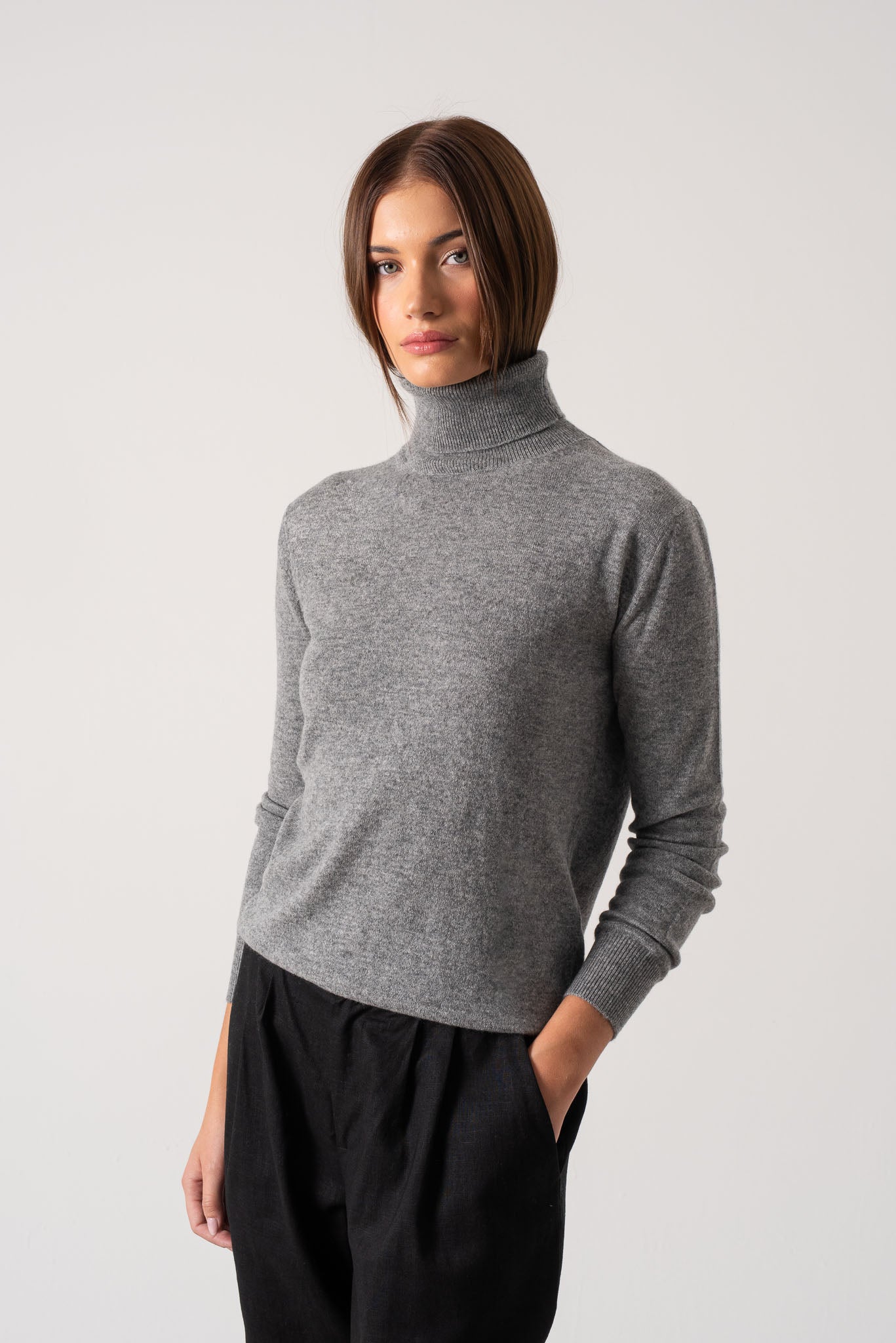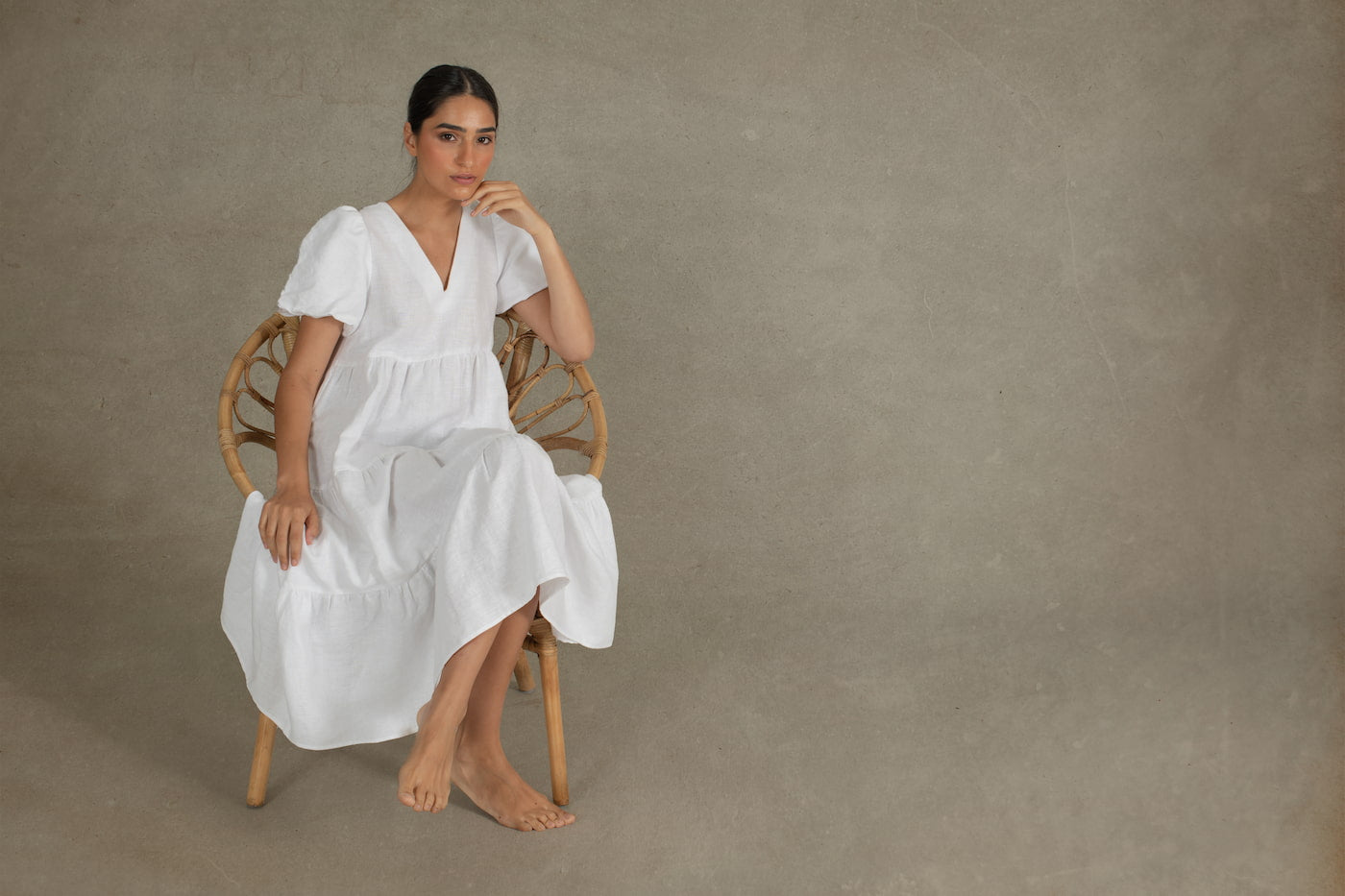Discover why linen is so expensive but why the price tag is worth it. Investing in linen clothing isn't just for one season; if treated gently, it could be for life.
We'll look at how and where linen is produced to justify this premium fabric's cost. It may be a little pricier than other mass-produced textiles, but linen won't disappoint.
It offers immaculate quality and is often produced by skilled artisans. The regions that harvest top-quality linen have been doing so for hundreds of years, so adding the finest linen tops to your collection is making yourself part of that beautiful story.
The extra splurge for linen will buy you exclusivity and timeless elegance that is priceless. Not only is this luxury textile a favourite of heiresses, Vogue editors and A-list actresses but it delivers unbeatable breathability, resilience and antibacterial properties. It's a simple way to infuse an expensive look into your closet that will get you a dinner reservation at every city hotspot.
Below, we'll take you through some of the reasons why linen is so expensive. Let's see an overview of the 5 reasons:
- Limited growing areas
- Rare textile
- Long harvest
- High-level production process
- Labour-intensive production

Reason 1: Limited growing areas
Flax linen cannot just grow anywhere or be created from thin air in a laboratory like synthetic fabrics—this factor makes it more expensive. Flax crops require a unique blend of conditions to grow well. Moderate temperatures, bountiful water supply and plenty of sunlight are the special ingredients needed to make the perfect linen recipe.
Western Europe is the perfect region for growing linen, and it has been for hundreds of years. In the current era, other growing regions (such as Ireland, Lithuania and China) have also been discovered—yet, these linens are not as premium.

Reason 2: Rare textile
Linen is one of those rare textiles that is irreplaceable. There are some fabrics that can be found anywhere and everywhere. Linen is the opposite.
It only makes up 1% of all textile production. So, when you invest in linen trousers you add exclusivity to your closet. The limited supply of linen fabric contributes to the fabric's higher price tag.
Reason 3: Long harvest
From seed to harvest, linen takes roughly three months to be ready. This process must be completed every year, as flax is an annual plant that only lives for one year. In our modern world of fast fashion and instant gratification, most businesses don't see linen's life cycle as favourable. Yet, for those who value craftsmanship and quality, linen over-delivers.
Discover what is flax linen and more details about its journey from crop to textile in our blog. Interestingly, flax isn't only used for clothing but can also be a nutritious food source.
Reason 4: High-level production process
Skill and patience are required to weave fragile flax fibres into linen fabric. The intricacy of this process attracts true artisans who live for their craft and means that the production process is longer and riskier than with most other fabrics.
Most brands spin the fibres on machines that produce fabric at a slower rate than cotton. This gentler pace makes linen fabric a symbol of the slow living movement but is not always good for business and hikes up its price. Some linen brands take the craftsmanship to the next level and handweave the fabric to prevent breakage, resulting in a pricier item.

Reason 5: Labour-intensive production
Despite our society's technological advancements, some processes still must be done by hand. We haven't been replaced by machines just yet— there's still hope, even though dystopian Hollywood movies would have us think otherwise.
In order to produce high-quality flax fibres, the linen plant must be pulled out by hand. No machine has yet been invented that can pull out the plants with roots still intact. When the plant is harvested with its roots it leads to a higher quality of fabric in the end. The main advantages are longer, finer yarns that do not dry as quickly. Flax that is hand-harvested is highly sought-after.
Next, the flax is dried, separated, spun into yarn and finally woven into sheets of fabric. Even though machines help with these stages of the production process, skilled workers are still necessary every step of the way. This need means that linen production requires significantly more labour and, hence, a bigger budget compared to other mass-produced fabrics such as cotton.
Is 100% linen better than cotton?
Cotton vs linen? Which textile comes out on top? In general, linen pieces are more expensive than cotton ones. But we feel that linen is worth it. The extra spend at the beginning pays off again and again. Both natural fabrics are breathable, biodegradable and hypoallergenic. Yet, linen doesn't just stop there.
Linen simultaneously oozes elegance and extreme strength. Its fibres are 30% stronger than cotton, allowing your beloved pieces to remain in immaculate condition year after year.
The prize for the most environmentally friendly fabric goes to linen. It needs less than 400% water compared to cotton crops, making you look and feel good about your ethics while wearing your linen pieces.
Linen also outperforms cotton in the cool department. Linen's natural moisture-wicking characteristic repels any sweat or moisture away from the skin, keeping you fresher for longer whatever the humidity levels.

What is so special about linen?
There are reasons why people are willing to spend a little extra on linen clothing. The splurge is worth it, and it just looks expensive without trying. We've already talked about the durability of the fabric—a black linen dress can be passed down from mother to daughter if well looked after. But linen's magical properties extend beyond just that.
Versatility is another factor that makes linen so special. You can rock it all year round, thanks to its thermo-regulating properties. These mean that you'll stay toasty when it's cold outside and cool in the sunshine. This is because the linen fibres expand and contract depending on the air temperature.
Is linen old money?
The old money aesthetic consists of well-cut clothes in the finest natural fabrics, that never go out of style. That could just as easily be a definition of linen clothing. Linen also has the "old" part covered—more than 30,000-year-old linen fabrics have been discovered.
Once a favourite of Roman senators and Ancient Egyptian royalty, linen has been and still is the uniform of the wealthy, especially in the summer. For evidence, just look at what people are wearing at stereotypically "old money" places like polo matches, Wimbledon or Capri. There's always a sea of matching linen sets, a crisp white linen shirt on the men and women and flowing easy linen dresses.
The beauty of linen is that it's for everyone. You can just as easily pair linen pants with a simple t-shirt as you could with a Bulgari necklace. Both ways, you'll look timelessly chic.

How can you tell if linen is high quality?
Not all linen is equal, so if you're after linen clothing that lasts, it must be high quality. Your first clue to the quality of a piece of clothing comes from the garment tag. Check it to find out where the linen was grown, how it was produced and whether the linen is organic. The most prized linen comes from Western Europe, France, Belgium, and the Netherlands because it is of superior quality and is harvested using traditional techniques.
Keep an eye out for any of the below certificates that are like the Olympic gold medals of the fabric world. Brands can only be awarded them if they meet strict criteria.
- OEKO-TEK Standard 100
- Global Organic Textile Standard (GOTS)
- Masters of Linen
There are a couple of different ways to identify premium linens. The most obvious is through colour. It should be rich and evenly dispersed throughout the whole fabric, and there shouldn't be any signs of discolouration or fading.
If all else fails, use your instincts. Often, the feel and look of luxury linen can be spotted. The texture feels and looks expensive—it's tightly woven and strong with a subtle glossy finish. Any textiles that feel flimsy should be avoided.
Conclusion: Why is linen so expensive?
Why is linen so expensive? We've taken you through the main reasons in our blog. Yet, when you consider all the fashion and easy-wear benefits of the luxury textile, it doesn't seem extravagant at all. As a bonus, linen pieces get softer with age and with every wash, so they're excellent value for money.
Below we'll explain why linen is so expensive:
- Produced in low numbers: even though linen production is a 700 USD million-dollar industry, the textile isn't mass-produced in large quantities like cotton and polyester. The lower supply, coupled with the increasing demand for linen, pushes up its price.
- Labour is essential in linen production: skilled workers are required to produce high-quality linen fabric. Machines have helped to speed up the process, but artisans are still needed and must be paid ethical wages.
- Slow & complex production: going from linen seeds to fabric is quite the journey. It takes harvesting, drying, spinning and weaving—these stages need to be performed by experts and often by hand.


